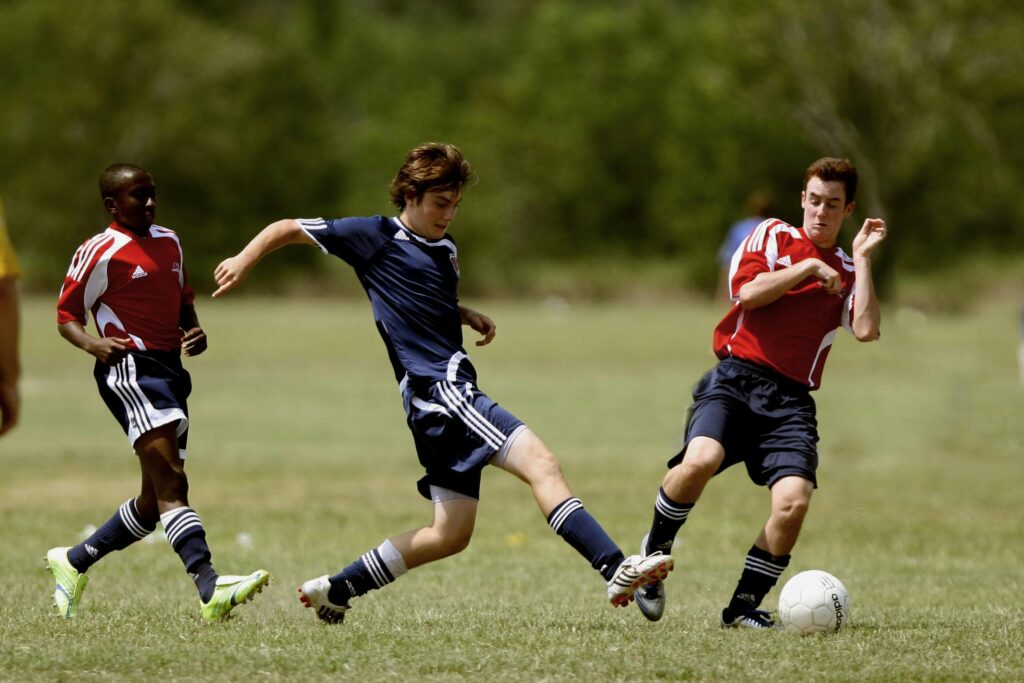Sep 29, 2025
Why Staying Active Really Matters for Teenagers
Introduction
Teenage years are a time of growth, transformation, and self-discovery. But while this stage is exciting, it also comes with unique challenges—especially for girls. Body changes, social pressures, and lack of confidence can make physical activity feel less appealing. Yet, staying active during these years is one of the most powerful ways for teens to build confidence, improve health, and develop lifelong habits.
In this article, we’ll explore the benefits of physical activity for teens, the barriers they face, and five practical ways parents and mentors can help young people embrace movement as part of their daily lives.
1. Understanding the Challenges of Adolescence
Adolescence brings both physical and emotional shifts that can impact how teens view exercise.
- Physical changes: Puberty introduces new realities—such as menstruation, increased sweating, and body hair—that may make sports feel uncomfortable.
- Social pressures: Many teens worry about being judged, whether they “fit in,” or if they’re “good enough” to play a sport.
- Fear of competition: Not every teen enjoys competitive environments, and many girls stop participating when they feel pressured to perform.
These barriers often lead to reduced activity levels, especially among teenage girls. Recognizing these challenges is the first step to helping teens stay engaged.
2. The Physical Benefits of Exercise for Teens
Regular activity is crucial for growing bodies. Even 60 minutes of movement a day can create lasting benefits:
- Improved bone and muscle strength: Exercise helps support healthy growth during a critical stage of development.
- Better coordination and flexibility: Sports and activities enhance motor skills and body awareness.
- Boosted energy: Contrary to the myth that exercise makes you tired, regular movement actually improves stamina and energy levels.
By making activity a regular habit, teens set a foundation for a healthier adulthood.
3. The Mental and Emotional Benefits
Physical activity isn’t just about fitness—it’s also a powerful tool for mental health.
- Stress relief: Exercise releases endorphins that reduce stress and promote relaxation.
- Better mood: Active teens often report feeling happier and more positive.
- Confidence and self-esteem: Movement helps teens feel capable, strong, and in control of their bodies.
- Resilience against mental health struggles: Since teenage girls are more likely to face anxiety, depression, or body image concerns, staying active can play a crucial protective role.
For many teens, the sense of joy and accomplishment they get from moving is just as valuable as the physical benefits.

4. Five Practical Ways to Encourage Teens to Be Active
- Reduce competition pressure
Encourage non-competitive activities like dance, yoga, cycling, or hiking. Removing the scoreboard often makes sports more inviting. - Offer variety and experimentation
Let teens try different activities—whether it’s martial arts, swimming, or team sports. Variety keeps things fresh and helps them discover what they truly enjoy. - Focus on fun, not performance
Teens are more likely to stick with an activity if they genuinely enjoy it. Look for programs and classes that emphasize fun, creativity, and personal growth. - Make it social
Exercising with friends adds motivation and creates a sense of belonging. From after-school clubs to weekend fitness classes, group activities make movement enjoyable. - Start small and build habits
Consistency matters more than intensity. A 20-minute walk, a short bike ride, or a beginner’s class is a great starting point. Over time, small steps turn into long-term habits.
5. The Role of Parents and Mentors
Parents, teachers, and mentors play an essential role in shaping teens’ attitudes toward physical activity. By being supportive, encouraging exploration, and modeling an active lifestyle, adults can help teenagers view exercise not as a chore but as a rewarding part of life.
Simple steps like exercising together, praising effort (not results), and creating a safe space for movement can make all the difference.
Conclusion
For teenagers, especially girls, staying active is about much more than fitness. It’s about feeling strong, confident, and mentally balanced during one of the most transformative stages of life. By removing barriers, focusing on fun, and encouraging small but consistent steps, parents and communities can help teens develop a lifelong love of movement.
Staying active truly is the real teenage dream—a dream that builds stronger bodies, healthier minds, and brighter futures.
More Details